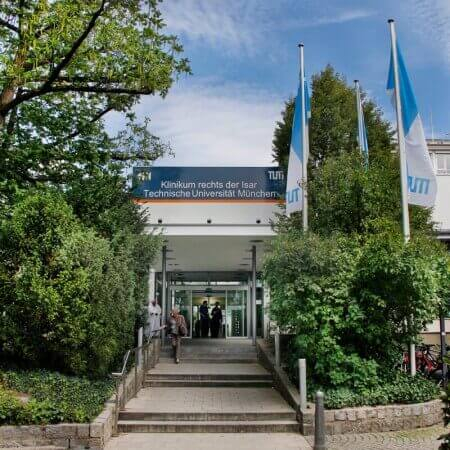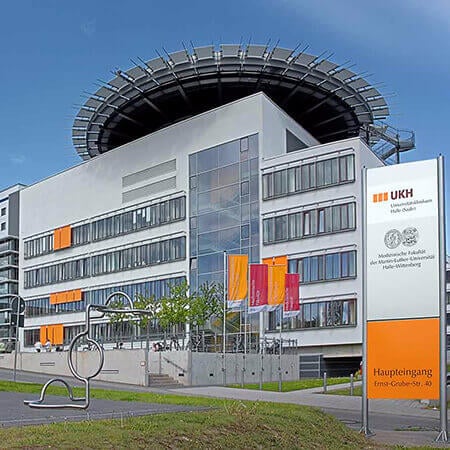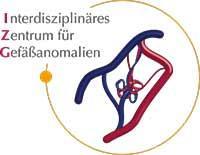Cholangiocarcinoma (Klatskin Tumor) — Embolization or Chemoembolization: treatment in the Best Hospitals in the World
Treatment prices are regulated by national law of the corresponding countries, but can also include additional hospital coefficients. In order to receive the individual cost calculation, please send us the request and medical records.

Department of Interventional Radiology
The Department of Interventional Radiology offers the full range of imaging examinations, as well as innovative image-guided minimally invasive techniques for the treatment of tumors, vascular diseases and internal pathologies (for example, CT, MRI, PET-CT, SPECT). The department's doctors have deep knowledge and colossal experience in the field of interventional radiological methods of treatment, which represent an excellent alternative to open surgical interventions. Despite the high level of technical equipment and the presence of advanced computerized systems, the focus is always on the person with his individual needs. Compliance with current clinical protocols and high professionalism of the department's specialists contribute to the successful clinical practice, as well as the reputability of the department among the best medical facilities of this kind in Germany.




Department of Interventional Radiology and Neuroradiology
The Department of Interventional Radiology and Neuroradiology offers a full range of advanced imaging diagnostics and minimally invasive treatments on both an inpatient and outpatient basis. The department has state-of-the-art medical equipment for imaging tests such as X-ray, computed tomography, magnetic resonance imaging, digital subtraction angiography, and mammography. The medical facility also performs many highly effective interventional therapeutic procedures under image guidance, which in many cases allow patients to avoid traumatic open surgery. For example, the department successfully performs local fibrinolysis, thrombectomy, percutaneous transluminal angioplasty, hemostasis, transarterial chemoembolization, uterine artery embolization, and other procedures. The department's neuroradiologists specialize in brain and spinal cord imaging and the treatment of central nervous system disorders. Interventional neuroradiology focuses on the treatment of carotid artery stenosis, brain aneurysms, arteriovenous malformations, dural fistulas, subdural hematomas, brain tumors, skull base and spinal tumors, and chronic back pain. The department's medical team has extensive clinical experience in their areas of expertise. The specialists are guided by the recommendations of the German Society for Interventional Radiology and Minimally Invasive Therapy (DeGIR) and the German Society for Neuroradiology (DGNR), which helps to achieve the best results.






Department of Adult and Pediatric Diagnostic, Interventional Radiology, Neuroradiology
The Department of Adult and Pediatric Diagnostic, Interventional Radiology, Neuroradiology is one of the best institutions of its kind in Germany and offers patients the full range of radiological studies and imaging-guided minimally invasive therapy. The department’s scope of tasks also includes imaging diagnostics in children of all age groups, detection and invasive treatment of cerebral vascular pathology (neuroradiology). Patient care is provided both on an inpatient and outpatient basis.






Cholangiocarcinoma is an aggressive malignant tumor with a poor prognosis. The treatment for this condition requires complex surgical interventions and high-tech procedures, which are successfully used in developed countries. German doctors use chemoembolization, radioembolization, ablation, targeted therapy, and other methods that significantly increase the survival rate of patients even with unresectable tumors.
Content
- What is cholangiocarcinoma?
- Cancer surgery
- Radical surgery
- Palliative operations and procedures
- Radiation therapy
- Systemic drug therapy
- Endovascular procedures
- Radiofrequency ablation
- Where can I undergo treatment?
What is cholangiocarcinoma?
Cholangiocarcinoma (also known as bile duct cancer or cholangiocellular cancer) is a group of malignant tumors that develop from the epithelium of the bile ducts. These tumors can be intrahepatic or extrahepatic.
Intrahepatic tumors are relatively rare, accounting for up to 8% of cases. The remaining 92% of cases are neoplasms that appear outside the liver. In turn, these extrahepatic tumors are also divided into two main groups, each occurring with similar frequency:
- Distal bile duct cancer
- Porta hepatis cancer (Klatskin tumor)
Cholangiocarcinomas come in different histologic types, but adenocarcinomas account for up to 90% of all cases.
Cancer surgery
Cholangiocarcinoma treatment is carried out using the following two types of surgical interventions:
- Radical (potentially curable)
- Palliative (for the treatment of jaundice and other complications)
Palliative surgery is used more often because bile duct tumors are usually found at an unresectable stage.
Radical surgery
Radical surgery for cholangiocarcinoma is very complex. It is best performed at experienced medical centers.
Radical surgery is performed if cholangiocarcinoma diagnostics show that the tumor can be totally removed. If there are some doubts, the doctor can perform a diagnostic laparoscopy to clarify the cancer spread.
Surgical treatment varies depending on the location of the tumor:
- For Klatskin tumor treatment, doctors perform a liver resection and remove the gallbladder, bile ducts, and lymph nodes. Sometimes parts of the pancreas and small intestine may be removed.
- For distal bile duct cancer, surgical treatment of cholangiocarcinoma is performed with the help of the Whipple procedure (pancreaticoduodenal resection). Part of the pancreas, duodenum, gallbladder, lymph nodes, and sometimes also part of the jejunum and stomach are removed.
- For intrahepatic bile duct cancer, a liver resection (partial hepatectomy) is performed.
It happens that the tumor can be completely removed, but it is impossible to leave a sufficient amount of liver tissue for the recovery of the organ and the performance of its functions. In this case, the only option for radical treatment is liver transplant surgery. However, this surgery is rarely performed for cholangiocarcinoma due to a lack of available donors. If the waiting period is long, chemoradiotherapy may be used to control the tumor.
Palliative operations and procedures
Most patients have tumors that are unresectable at the time of their detection. They undergo palliative operations and procedures. These interventions not only prevent complications and relieve symptoms but also create conditions for subsequent tumor control with systemic therapy and local procedures.
The most frequent complication of cholangiocarcinoma is biliary obstruction with the development of mechanical jaundice. The following procedures are used to eliminate or prevent this complication:
- Biliary bypass surgery is an operation to form a bypass for bile flow. In developed countries, it can be performed using laparoscopic techniques.
- Endoscopic bougienage and stent implantation assume bile duct dilatation and the placement of a tube inside that keeps the lumen open. This is not surgery, but a minimally invasive procedure that is performed with instruments inserted through the oral cavity.
Bypass surgery is a more reliable treatment option, so it is used more often. Stent implantation is used when life expectancy is low, there are contraindications to bypass surgery, or there is a refusal of this operation.
Radiation therapy
Cholangiocarcinoma is resistant to radiation, so radiation therapy is rarely used in the treatment of this tumor. In rare cases, one of the following two types of radiation therapy can be used:
- External beam radiation therapy
- Endobiliary brachytherapy
External beam radiation therapy is performed in Germany with modern methods using 3D CRT, IMRT, and SBRT techniques, which significantly reduce the course of irradiation.
External beam radiation therapy is usually not used after surgery because it does not significantly affect the risk of recurrence or survival. The benefit of irradiation before surgery has not been proven. Therefore, the method is mainly used to control unresectable tumors and relieve symptoms in the advanced stages of the disease.
Endobiliary (intraductal) brachytherapy is used as a palliative procedure. It is an interventional radiology method. Doctors insert a thin radioactive wire inside the bile ducts to use radiation to destroy the area of the tumor that is blocking the flow of bile.
Systemic drug therapy
The following methods of systemic therapy can be used for cholangiocarcinoma:
- Chemotherapy is the main method used before surgery, after surgery, and as part of chemoradiation therapy in inoperable patients
- Targeted therapy (FGFR2 and IDH1 inhibitors) is used in developed countries (in the presence of appropriate mutations in cancer cells)
Unfortunately, most patients are not candidates for targeted therapy, and systemic chemotherapy has low efficacy.
Endovascular procedures
Since systemic chemotherapy is often ineffective for cholangiocarcinoma, doctors aim to deliver drugs directly to the tumor through the blood supplying vessels rather than into the systemic bloodstream.
Regional chemotherapy options include:
- Continuous infusion of chemotherapy drugs through the hepatic artery using a surgically implanted device
- Transarterial chemoembolization (TACE) involves blocking the blood vessels with substances containing chemotherapy drugs
The TACE procedure is more effective because it involves not only delivering drugs to the tumor but also depriving it of blood supply. Emboli that enter the blood vessels block the arteries supplying the tumor, causing a significant portion of the tumor to die.
Chemoembolization for Klatskin tumor in Germany can be performed using various techniques. The most common are oily chemoembolization of the liver, when lipiodol with dissolved chemotherapy drugs is injected into the arteries, and embolizing drug-saturated microspheres. The second type of procedure is considered more effective. Microspheres, unlike lipiodol, irreversibly disrupt the blood flow within the tumor. In addition, they provide a longer lasting drug effect on cancer cells.
Chemoembolization works well even for large and multiple tumors. It increases the life expectancy of patients. Moreover, the treatment is minimally invasive and rarely causes severe complications. All procedures are performed from inside the blood vessels through an incision in the groin area under X-ray guidance.
Another option for embolization for cholangiocarcinoma is radioembolization. This is the injection of Yttrium-90 microspheres into the blood vessels supplying the tumor. The indication for this procedure is an unresectable tumor with an expected life expectancy of more than 3 months. The efficacy of the procedure was proven in a systematic review by Al-Adra et al. (1) Radioembolization provided a partial response (tumor reduction by more than a third) in 28% of patients and disease stabilization in 54%, with a median survival of 15.5 months.
Radiofrequency ablation
Radiofrequency ablation can provide good results in inoperable patients with intrahepatic cholangiocarcinoma. This is a minimally invasive treatment method. A probe is inserted into the tumor and heated. Due to the high temperature, the neoplasm is destroyed.
Research confirms the effectiveness of this approach. For example, Yin Fu et al. treated 17 patients, 7 of whom were newly diagnosed and 10 had recurrent cholangiocarcinoma. After the completion of ablation, the physicians obtained a three-year survival rate of 43.3% and a five-year survival rate of 28.9%. The best results were achieved in patients without lymph node metastases, with fewer tumors in the liver, and with less aggressive histologic tumor types. (2)
Where can I undergo treatment?
You can undergo your diagnostics and treatment in Germany. The leading clinics in the country are presented on the Booking Health website.
You are welcome to use our service to choose the best hospitals for cholangiocarcinoma treatment and find out the cost of medical services for treatment abroad. When you make your treatment appointment through Booking Health, the prices will be lower for you due to the lack of additional coefficients for foreign patients. Our specialists will help you select a hospital and arrange your trip.
Authors:
The article was edited by medical experts, board-certified doctors Dr. Nadezhda Ivanisova and Dr. Vadim Zhiliuk. For the treatment of the conditions referred to in the article, you must consult a doctor; the information in the article is not intended for self-medication!
Sources:

